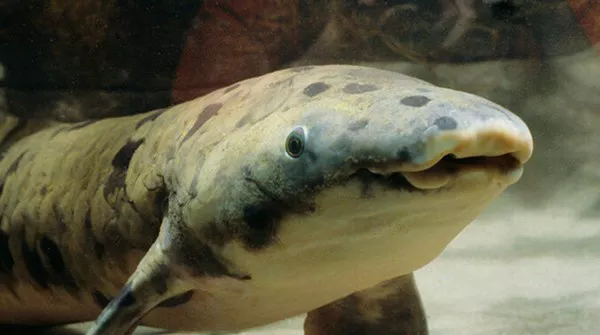Lungfish are a fascinating group of fish that are named for their unique lung-like organs, which allow them to breathe air. While most fish rely exclusively on extracting oxygen from the water through their gills, lungfish have evolved a more complex respiratory system that allows them to survive in environments with low oxygen levels or even out of the water for extended periods of time.
There are six species of lungfish found in the world, all of which are divided into two families: the African lungfish and the South American lungfish. While both groups share many of the same adaptations for air-breathing, there are some differences in their behavior and physiology.
In general, lungfish are able to breathe both water and air, and will switch between the two depending on their needs. When in water, they use their gills to extract oxygen from the water, just like other fish. However, when oxygen levels in the water are low or when they need to conserve energy, lungfish will come to the surface to gulp air into their lungs.
Unlike other fish, which have relatively simple gill structures, the lungs of lungfish are much more complex, with numerous chambers and blood vessels that allow for efficient gas exchange. When the lungfish inhales air, the air travels through a tube called the glottis, which leads to the lungs. There, oxygen from the air is absorbed into the bloodstream and carbon dioxide is released. When the lungfish exhales, the carbon dioxide-rich air is expelled through the same tube.
In addition to their unique respiratory system, lungfish have also evolved a number of behavioral adaptations to help them survive in low-oxygen environments. For example, they are able to aestivate, or enter a state of dormancy, during dry seasons or droughts, burying themselves in the mud at the bottom of ponds or rivers to conserve energy and avoid dehydration. During this time, they are able to survive for several months without food or water, relying solely on the oxygen stored in their lungs.
Overall, the ability of lungfish to breathe air has allowed them to adapt to a wide range of aquatic environments, from stagnant ponds to fast-moving rivers. While they may not be the most well-known group of fish, their unique respiratory system and behavior make them a fascinating subject of study for biologists and fish enthusiasts alike.


























